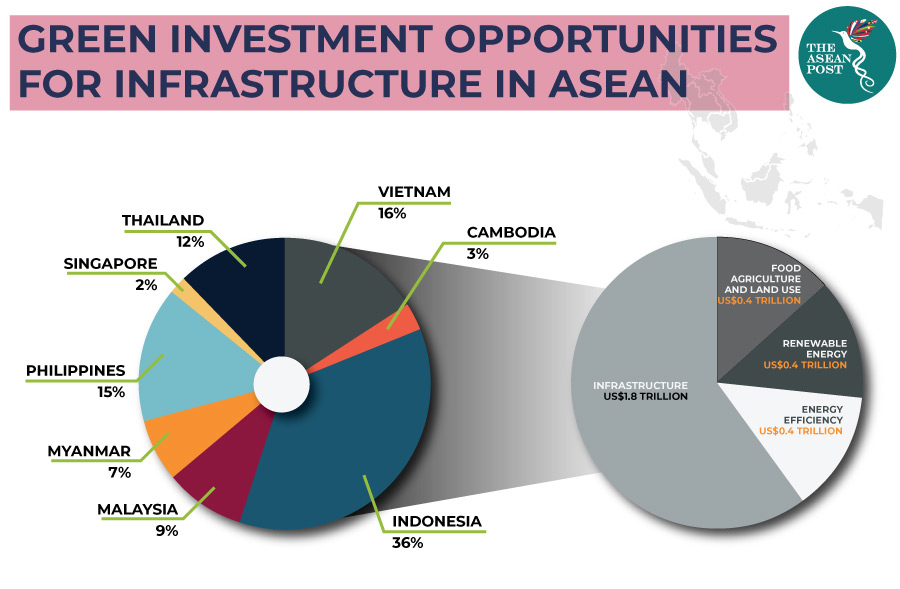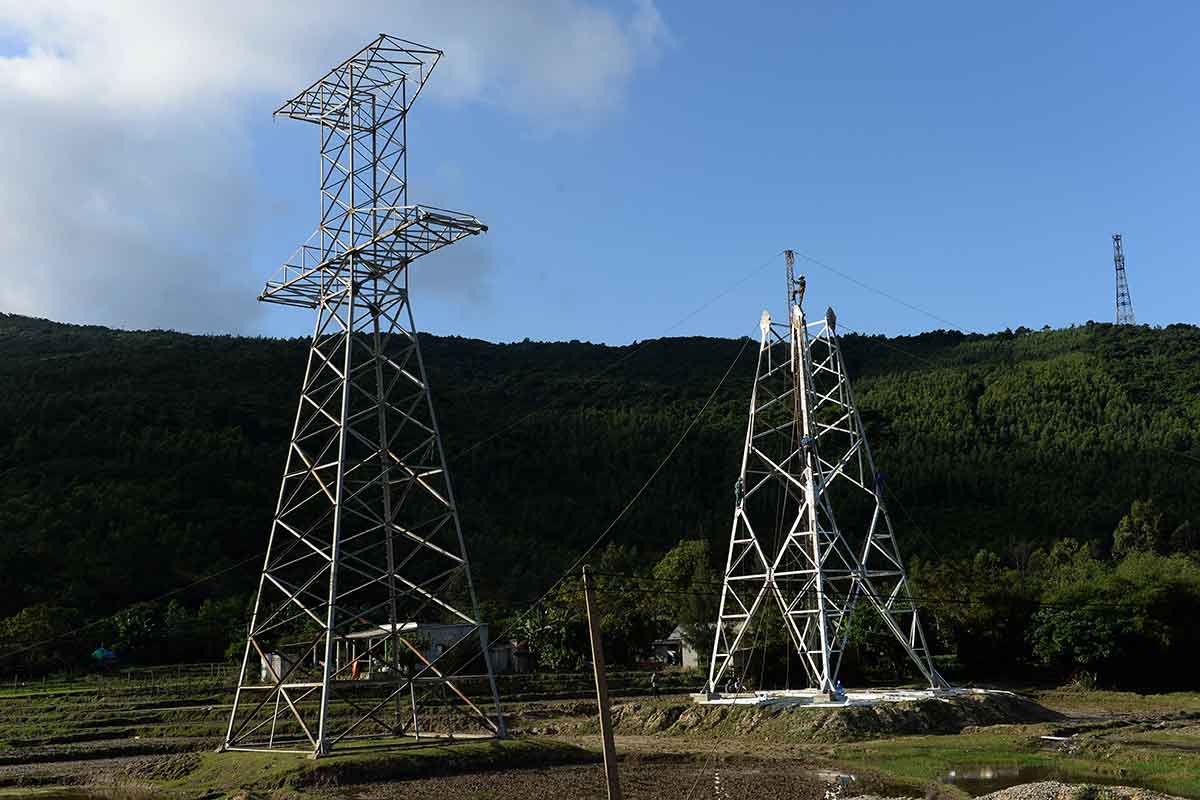As a growing number of people become acutely aware of the need to protect the environment, the demand for goods and services that are sensitive to such inclinations will undoubtedly increase.
Green bonds, energy efficient buildings, solar parks, and wind farms are just some of the many initiatives that can help attain the goal of a cleaner and more sustainable environment.
Green infrastructure investment opportunities
Where there is a demand, there is an investment opportunity. Such an opportunity has presented itself in the infrastructure sector.
A 2017 report by Singaporean financial services group, DBS and the United Nations (UN) has indicated that ASEAN’s total green financing opportunities lie at US$3 trillion between 2016 and 2030. Investments in green infrastructure makes up 60 percent of this amount.
The goldmine for green infrastructure investments lies primarily in energy transmission and distribution (US$700 million), climate change and mitigation (US$400 million) and water (US$380 million). Besides that, opportunities are also aplenty in rail (US$60 million) and telecommunications (US$260 million).
The crème de la crème
What drives investment in distributed grid development is low electrification rates in the region primarily in countries like Myanmar and Cambodia where electrification rates (based on grid connectivity) is at 26 percent and 65 percent, respectively.
As these two ASEAN nations seek to improve electricity access especially to rural areas, it opens up avenues for investments upwards of US$100 million and can reach US$1 billion with an average payback time of over 15 years. Besides that, countries with existing extensive grids but want to improve transmission of electricity like Vietnam, Indonesia and Thailand also offer lucrative potential for investment.

Water is also a crucial green infrastructure investment avenue in places like Indonesia and the Philippines as Southeast Asia’s water market is slated to grow 20 percent annually. The technology risk associated with such an investment is quite low given that technologies utilised in water treatment plants, dams and flood control waterworks are relatively established.
However, innovation in business models to help convert non-revenue generating water to revenue generating water may be necessary. Besides that, the high payback period, upwards of 15 years may impact credit risk and cause commercial financiers to shun away. However, given that most water assets are publicly owned, state concessions and grants are likely the more obvious sources of financing.
Telecommunications investments which cover civil engineering works like land and sea cables and transmission towers are also highly sought after in places like Indonesia, Vietnam and the Philippines. The cost to build a communications tower averages between US$200,000 and US$300,000 and with the burgeoning demand for faster communications speeds (4G and above), the demand for such structures will only increase.
Private and public partnership ventures in this area will be highly leveraged as national and multilateral development banks will continue to support financing by way of debt, guarantees and equity.
Other investment opportunities
Other areas of potential green infrastructure finance like rail works and climate adaptation are also present but the investment size and commercial viability is lower than in other areas. For example, climate change proofing infrastructures at times don’t offer direct financial returns and only social and environmental benefits. Nevertheless, herein lies investment potential in terms of fulfilling a company’s corporate social responsibility portfolio.
Rail investments which represent a meagre slice of US$60 billion when compared to the US$1.8 trillion investment cake suffers a similar predicament. Besides that, the lengthy average payback period of approximately 25 years establishes a significant credit risk. Still, investments in this area cannot be fully dismissed because it is incredibly sensitive to changes in technology like electric trains and Hyperloop systems which can skyrocket its potential.
In short, there is no lack of investment opportunities in Southeast Asia when it comes to green infrastructure. As a developing region, such lucrative opportunities will only increase as more and more projects and initiatives are proposed. The astute investor will keep an eye out for such possibilities as the region continues to flesh out its potential.
Related articles:
